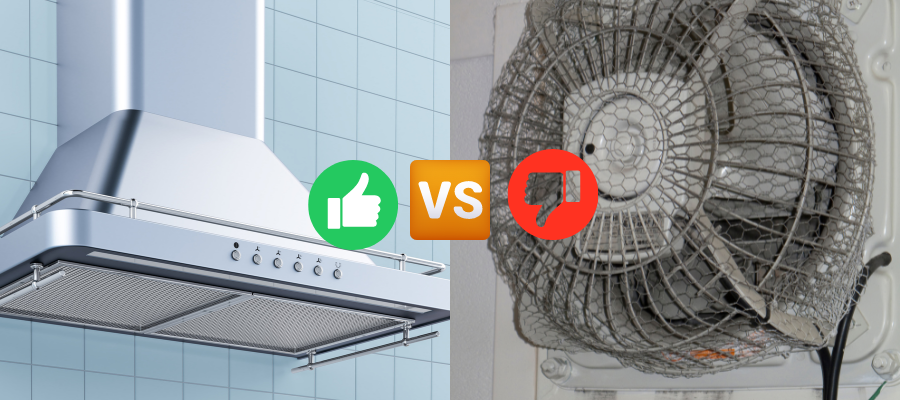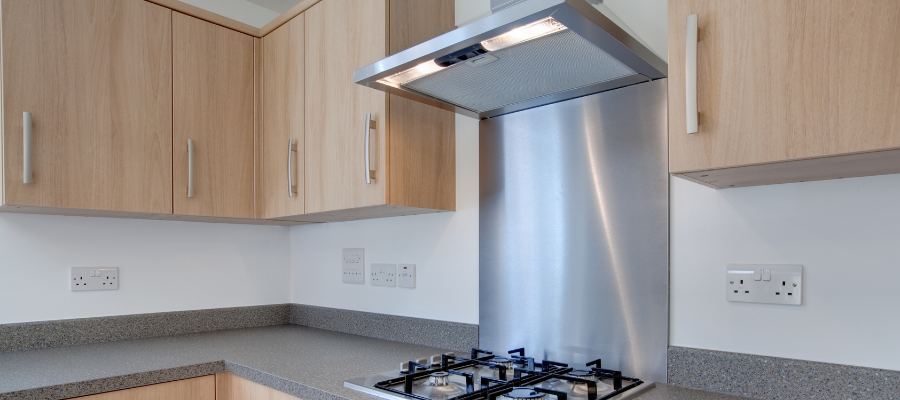There is no denying that the kitchen is the heart of your home. You can not enjoy the cooking if the kitchen atmosphere is not clean and fresh. That is why, even in the old time, there used to be a chimney hub installed on the rooftop of every kitchen to exhaust hot and unhealthy cooking smoke. With plenty of modern design and highly effective electric kitchen chimneys available in the market, the kitchen time has become quite comfortable today.
The Indian cooking style is prone to generate unwanted smoke that chokes the surrounding. Here comes the necessity of a chimney. It sucks up all the smoke and throws it up in the air outside the house, keeping our kitchen fresh even after a long cooking session. This ability makes the ‘chimney’ the darling of every kitchen.
Contrary to this opinion, some believe that an exhaust fan works the same and takes the kitchen pollution out at less expense.
So why is a chimney necessary for the kitchen?
To justify our statement that a chimney is necessary for the kitchen, we will be discussing-
- Difference between a chimney and an exhaust fan
- Types of kitchen chimney
- Benefits of using kitchen chimney
For this, it is necessary to understand the function of the chimney and how it is different from the kitchen exhaust fan?
Difference Between a Chimney and Exhaust Fan

The End Result
The kitchen exhaust fan consists of a motor and blades. These motors and blades expel only smoke and bad odor present in the air. However, it cannot drag the whole volume of air inside the kitchen as an exhaust fan is installed far away from the source of the smoke. The major drawback of the kitchen exhausts fan is not capture the oil or grease, due to which the walls, ceiling, and interior get oily and dirty.
Chimneys are built with suction motors and filters; when placed right above the cooking counter in a kitchen, they pull in the smoke, gases, and oil particles generated during cooking. The grease particles are stuck in the filters, and the smoke is thrown out through the vent.
Cleaning Process
The exhaust fan needs to be regularly cleaned as oil and grease gets accumulate on its blade. The cleaning of the kitchen chimney is not as frequent as an exhaust fan. Moreover, there are auto-clean chimneys also available that clean themselves.
Price and Features
No doubt, the electric chimney for the kitchen comes much costlier than the kitchen exhaust, but it comes loaded with a lot of useful features. The modern kitchen chimney has more functionality and operating options to adjust the suction and timer.
From the above discussion, it is quite clear why a kitchen chimney is necessary in modern times and how it is different from the exhaust fan. You also would have understood the limitations of an exhaust Fan.
Let’s now understand the different chimneys, their working mechanism uses, and their benefits.
Types of Kitchen Chimney

(A) Based on the components and functionality
- Ductless Chimney- Such kitchen chimney comprises a suction unit. This unit has a blower motor and a filtration unit (Baffle, Cassette, and carbon filter). This kind of chimney re-circulates the kitchen’s polluted air through the filters and takes the oily/ greasy substances out.
- Ducted chimney-Such kitchen chimney consists of many other components, such as a hood, an operating interface, and an attached vent. The blower motor sucks the smokey air present in the kitchen and passes it through a filter to absorb sticky oil particles, and vents the purified air out in the kitchen.
(B) Based on the design of the kitchen and position of the cooking platform, hob, and stove
This classification is based on chimneys’ capabilities and where they can fit.
- Wall Mounted chimney – When the hob is located adjacent to the wall, these chimneys are the best. These kitchen chimneys are fitted against the wall and cook-top.
- Island chimney – If the cooking platform and hob are located at the center of the kitchen, away from the wall, the island chimney is recommended as it hangs to the ceiling above the cooking top hob.
- Built-in chimney- Such chimneys are integrated inside the kitchen wood furniture work against the wall.
- Corner chimney- A corner chimney is fitted in the kitchen corner where the cooking top and hob are located at the corner against the wall.
Benefits of Using Kitchen Chimney

Clean and Fresh Kitchen
The process of deep frying and roasting vegetables and spices release oily and greasy particles that turn our kitchen walls and tiles yellowish. Chimney does not allow these unwanted pollutants to circulate and settle in the kitchens. Rather, it sucks up all the smoke right from above the stove, just at the time of release, to keep our kitchen clean.
Saves from the Aromas that Irritate the Respiratory Function of the Body
We occasionally feel irritation and witness sneezing while working with spices and chilies due to the scent and aroma they release. Many people are more sensitive to certain smells, and they experience difficulty breathing. A kitchen chimney absorbs all of these annoying odors, saving you from a sneezing attack.
Protects home air from getting polluted
Cooking food high in carbohydrates and fat releases fumes such as carbon dioxide, nitrogen dioxide, carbon monoxide that are very harmful to our lungs. If these gases remain in the house, they can lead to heart problems and eye irritation. Kitchen chimneys expel all these, saving the home environment from pollution; giving you a healthy life.
Provides a healthy lifestyle
Cooking generates a lot of aromas, fumes, and smoke that is not good for health and should stay outside the house. Kitchen chimneys help in doing so. They take undesired smoke and pollutant outside the kitchen, providing a healthy lifestyle.
Give a better cooking experience
Cooking at times is therapeutic. But, the aromas, fumes, and oils released while the process at times irritate some much that the process of cooking could not be enjoyed.
But, if you have a chimney installed in your kitchen, these fumes can be easily avoided and cooking can be fully enjoyed.
Conclusion
From the above-discussed variety of chimneys, their working mechanism and benefit, it can be wisely concluded why chimney is necessary for the kitchen. A kitchen chimney is necessary to protect the house
interior from getting a stain from the kitchen oily and greasy substance that otherwise gets settles on the surface and gives an awful look to the house interior.
Further, it helps lead a healthy life as it keeps away the unnecessary pollutants from the house, keeping the house environment fresh and pollutants-free.
Posts That You May Like
- 9 Best Electric Hand Blender for Indian Kitchen: Exclusive Review
- 10 Best Cooking Oil Dispenser Bottle for Kitchen: Exclusive Collection
- 10 Best Sandwich Maker in India for Quick Breakfast Preparation
- The 10 Exclusive 4 Burner Gas Stove for Super-fast Cooking
- 9 Best Kachi Ghani Mustard Oil for Everyday Cooking
- Best 2 and 3 Burner Gas Stoves in India: The Exclusive Collection
- 10 Best Hob Top Gas Stoves in India for Modern Kitchen
- 11 Best Quality Basmati Rice in India for Delicious Biryanis
- 11 Best Induction Cooktops in India – Review and Buying Guide
- 10 Best Chakki Atta in India for Healthy Meal
- Cooking with Precision: Induction Cooktops vs Gas Stoves - February 25, 2023
- How to Take Care of Your AC Outdoor Unit for Better Cooling? - August 4, 2022
- Why is My Fridge Not Cooling? 10 Potential Reasons - July 15, 2022
